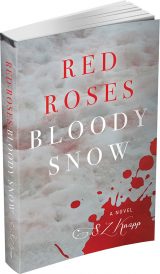Published: June 27, 2017
Last weekend, I went to the Historical Novel Conference in Portland. I enjoyed hearing writers talk about breathing life into the past through lively characters, accurate historic details and inventive plots, but those who were successfully self-publishing intrigued me.
It seems that, as with most genre fiction, that the route to financial success lay in writing series. Libbie Hawker, author of more than a dozen novels and three books for writers, put it succinctly, “Write quickly; Write series.” (See the first two books of a Vampire series, above.) Essentially, she suggests you can build a fan base by offering a sample that is free or low-cost (often the first book in the series), which will induce readers to buy subsequent books. The first book becomes a loss leader, but with independent publishing, the author retains more money per sale, so it balances out.
A few other points:
- Your mailing list is gold – it will take time and money to build a list, but the effort should pay off. Put your email at the end of the book, ask readers to join your list; think about how you can use your list to announce new releases, special deals, etc.
- Social media is fun, and can be useful in a lot of ways, but may not lead to direct sales (so don’t worry if you don’t tweet!)
- Advertising on sites where readers are looking for new books can bring more readers to the free books, and to your mailing list. Some sites mentioned include BookBub, The Fussy Librarian, FreeBooks, and Kindle Nation Daily. All of these are pay per click, as is Amazon Marketing Services. You can try out ads for very little money, and see if they lead to sales.
- You can submit books for review in Publishers Weekly at Booklife. This is where bookstores and libraries often look for books. If you want to sell to bookstores and libraries, make sure that the book is returnable.
- Your cover is gold. Maybe more important than the writing. Budget for cover design, find someone who has done covers you like. You can also change your covers from time to time to keep the design fresh.
Successful book selling seems to be a mix of good writing and book design, tenacity and luck. Staying up to date on publishing and selling trends will help you effectively market your book and find your fan base.

